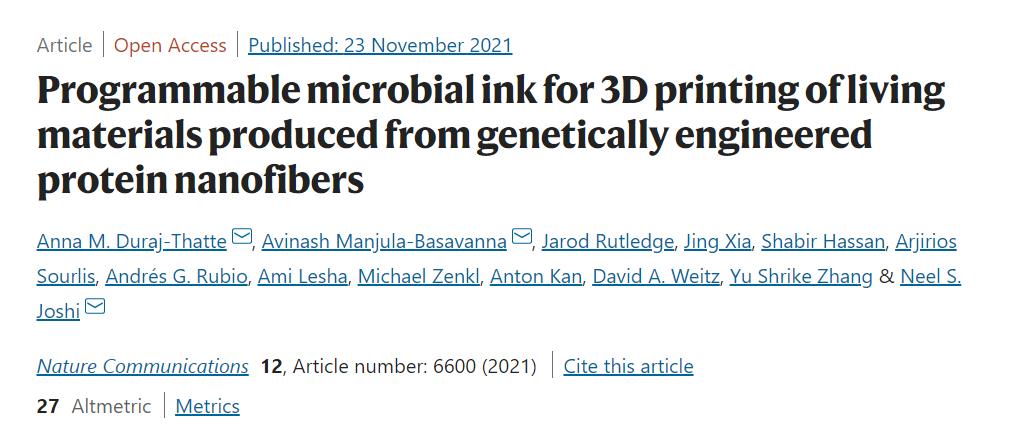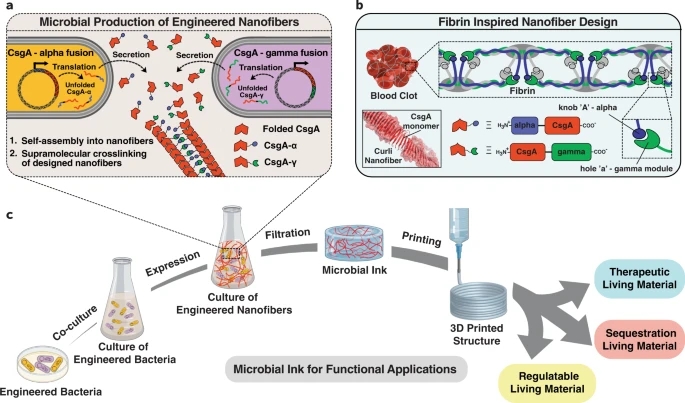According to a proof-of-concept study published in the British journal Nature Communications on November 23, 2021, a US research team reports an advanced microarray made of genetically modified Escherichia coli
biology
Inks that can be used to print 3D materials with functional and programmable properties. The research also demonstrates potential applications of the technology, such as isolating the toxic chemical bisphenol A that occurs in the environment.

The direct use of microorganisms to prepare printing inks without the addition of other polymers or additives opens up entirely new possibilities for the manufacture of materials where traditional substances are not available. At the same time, the technology could also be used to develop materials that can sense and respond to their surroundings.Engineers believe that as long as they have3D printingThe ability of this material makes it possible to customize the material and adapt it for specific uses.
Microbial inks composed of living cells have always been candidate media for this goal, but they need to combine target material properties with cell activity, which is a technical difficulty.
This time, a joint team including Northeastern University, Virginia Tech and State University, and the Wyss Institute for Biologically Inspired Engineering at Harvard University reported an advanced microbial ink made from Escherichia coli that was genetically engineered modified to produce nanofibers. These nanofibers can be condensed and printed in 3D.

The researchers then combined the ink with other microbes that were genetically engineered to perform specific tasks, and found that the hydrogel could gain functionality. The research team used the hydrogel to prepare a material that secretes the anticancer drug azurin in response to chemical stimuli, and also designed a material that can isolate the toxic chemical bisphenol A that occurs in the environment. Material. Bisphenol A was once widely used in plastic bottles and plastic cups, but later studies believed that it could lead to endocrine disorders and threaten human health. Since March 2, 2011, the EU has banned the production of baby bottles containing bisphenol A. Therefore, isolating BPA already present in the environment would be a practical safety technology.
The researchers believe that their new study may have implications for the construction of spatial structures, but further research is needed to explore their future customized uses.
Original paper:
https://www.nature.com/articles/s41467-021-26791-x
(Editor in charge: admin)


0 Comments for “Microbial ink enables 3D printing of programmable ‘living materials’”